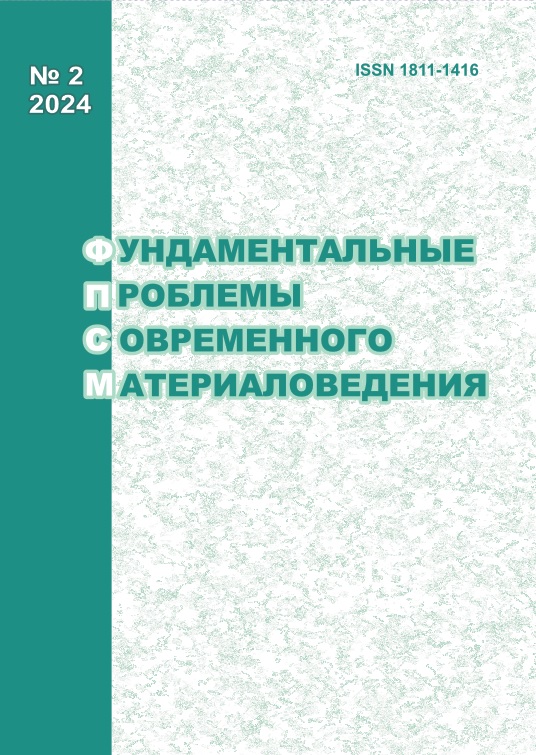DEPOSITION OF TUNGSTEN DISILICIDE POWDER ON TITANIUM ALLOY Ti6Al4V BY ESD TECHNIQUE
10.25712/ASTU.1811-1416.2024.02.010
Keywords:
tungsten disilicide, Ti–WSi coating, Ti6Al4V alloy, electrospark deposition, oxidation resistance, hardness, corrosion, coefficient of friction, wearAbstract
Abstract. Ti-WSi-based coatings can provide thermal stability of structural materials, their resistance to oxidation and corrosion, as well as resistance to abrasive wear. Ti-WSi2 coatings were obtained using the electrospark deposition method on titanium alloy TI6AL4V in an anode mixture of titanium granules with the addition of 2, 6, 10 vol.% tungsten disilicide powder. The structure of the coatings was studied by X-ray phase analysis, scanning electron microscopy and micro-X-ray spectral analysis. Oxidation resistance tests were carried out at a temperature of 900 °C for 100 hours. The wear resistance of the coatings was studied under dry friction conditions at a load of 25 N. According to X-ray phase analysis, the composition of the coatings contains low-temperature WSi2, αTi, Ti5Si3, and high-temperature WSi2. With increasing WSi2 content in the anode mixture, the microhardness of the coatings increased from 11.93 to 13.24 GPa. The average values of the coefficient of friction of the coatings ranged from 0.75 to 0.86. According to test results, the wear resistance of the coatings was from 3 to 7 times higher than that of the Ti6Al4V alloy. The use of electrospark deposition Ti-WSi coatings makes it possible to increase the oxidation resistance of titanium alloy Ti6Al4V from 7 to 14 times.












 Journal «Fundamental’nye problemy sovremennogo materialovedenia / Basic Problems of Material Science»
Journal «Fundamental’nye problemy sovremennogo materialovedenia / Basic Problems of Material Science» This work is licensed under a
This work is licensed under a 
